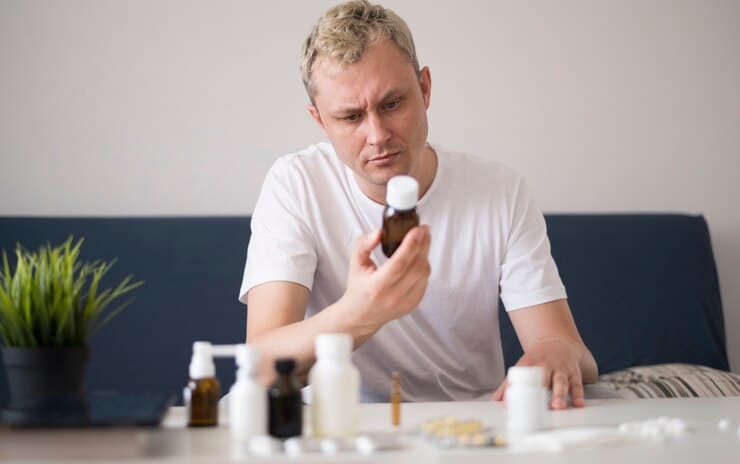What to Expect from Antibiotic Cream for Acne Treatment

Strong 8k brings an ultra-HD IPTV experience to your living room and your pocket.
Acne is a persistent skin condition that affects people of all ages, often leading to feelings of frustration and self-consciousness. While there are numerous treatment options available, one of the most effective and frequently prescribed solutions is antibiotic cream for acne prescription. Understanding what to expect from this type of treatment can empower individuals to manage their acne more effectively and improve their skin health. In this article, we will explore the mechanisms of antibiotic creams, their benefits, potential side effects, and how they fit into a comprehensive acne treatment plan.
Understanding Acne and Its Causes
Before delving into the specifics of antibiotic creams, it is essential to understand the nature of acne itself. Acne occurs when hair follicles become clogged with oil, dead skin cells, and bacteria, leading to various forms of blemishes, including whiteheads, blackheads, and cysts. Hormonal fluctuations, particularly during puberty, menstruation, or pregnancy, can trigger acne. Other contributing factors include stress, diet, and certain medications.
The bacterium Propionibacterium acnes plays a significant role in acne development. This bacteria thrives in clogged pores, causing inflammation and leading to the red, swollen bumps commonly associated with acne. Antibiotic creams target this bacteria, making them a valuable tool in the fight against acne.
The Role of Antibiotic Creams in Acne Treatment
Antibiotic creams are topically applied medications designed to reduce the number of bacteria on the skin and decrease inflammation. The most commonly prescribed antibiotics for acne are clindamycin and erythromycin. These medications work by inhibiting bacterial growth and addressing the inflammatory component of acne.
When used correctly, antibiotic creams can significantly reduce the severity and frequency of acne breakouts. They are particularly effective for individuals with moderate to severe acne or those who experience inflammatory lesions, such as pustules and cysts. By targeting the bacterial infection and inflammation, these creams can promote clearer skin and improve overall complexion.
What to Expect When Using Antibiotic Creams
When starting a treatment regimen with an antibiotic cream for acne prescription, it is crucial to have realistic expectations. While many individuals experience positive results, the timeframe for improvement can vary. Here’s what users can typically expect during the course of treatment:
Initial Phase: Adjustment Period
In the first few weeks of using an antibiotic cream, the skin may go through an adjustment period. During this time, individuals might notice an increase in redness or irritation as the skin adapts to the medication. This reaction is normal and should subside within a short period. It is important to follow the dermatologist's instructions closely during this phase, applying the cream as directed and avoiding excessive scrubbing or harsh cleansers that could exacerbate irritation.
Visible Improvements: Two to Three Weeks
After the initial adjustment phase, many users begin to see visible improvements in their skin condition within two to three weeks. This can manifest as a reduction in the number of active breakouts, decreased redness, and overall smoother skin texture. The antibacterial properties of the cream help to reduce the bacterial load on the skin, leading to less inflammation and a clearer complexion.
Continued Use: Long-Term Benefits
For optimal results, antibiotic creams are often prescribed for several months. Continued use can lead to sustained improvements, with many individuals experiencing significant reductions in acne lesions and the appearance of post-acne scars. However, it is essential to remain patient and consistent with the treatment plan, as results may take time to manifest fully.
Combining Antibiotic Creams with Other Treatments
Antibiotic creams are often most effective when used in conjunction with other acne treatments. A dermatologist might recommend a combination of therapies to address multiple aspects of acne. For instance, pairing an antibiotic cream with a topical retinoid can boost overall effectiveness. Retinoids promote cell turnover and prevent clogged pores, while antibiotics target bacterial growth and inflammation.
Additionally, it is important to maintain a comprehensive skincare routine that includes gentle cleansing, moisturizing, and sun protection. Using non-comedogenic products ensures that the skin remains hydrated without contributing to further breakouts. This holistic approach can enhance the results of antibiotic treatment and promote healthier skin overall.
Potential Side Effects and Precautions
While antibiotic creams are generally well-tolerated, some individuals may experience side effects. Common side effects include:
Skin Irritation: Redness, dryness, or peeling may occur, particularly during the initial adjustment period. If these symptoms persist or worsen, it is advisable to consult a healthcare provider.
Allergic Reactions: Although rare, some individuals may experience an allergic reaction to the antibiotic. Signs of an allergic reaction can include severe itching, rash, or swelling. If these symptoms arise, immediate medical attention is necessary.
Antibiotic Resistance: Prolonged use of antibiotics can lead to antibiotic resistance, where bacteria become less susceptible to the medication. To mitigate this risk, it is essential to use antibiotic creams as prescribed and not for extended periods without a doctor’s guidance.
To ensure safe and effective use, individuals should communicate openly with their healthcare provider about any concerns or pre-existing skin conditions. Regular follow-ups can help monitor progress and make necessary adjustments to the treatment plan.
The Importance of Lifestyle Factors
In addition to using antibiotic creams, lifestyle factors play a significant role in managing acne. A balanced diet rich in fruits, vegetables, and whole grains can help support skin health. Staying hydrated and getting adequate sleep are also essential components of an effective acne management strategy.
Moreover, individuals should be mindful of their skincare habits. Avoiding harsh scrubs and products that contain alcohol can help minimize irritation. Instead, opting for gentle, non-comedogenic products can support the treatment process and promote clearer skin.
Conclusion
Antibiotic creams can be a valuable part of an effective acne treatment plan, particularly for those struggling with moderate to severe acne. By reducing bacterial growth and inflammation, these creams can help individuals achieve clearer, healthier skin. However, it is essential to approach treatment with realistic expectations and maintain open communication with healthcare providers throughout the process.
For those seeking personalized advice and support in their acne treatment journey, EIR DOC is here to help. With a dedicated team of professionals ready to assist you, take the first step towards clearer skin today!
Note: IndiBlogHub features both user-submitted and editorial content. We do not verify third-party contributions. Read our Disclaimer and Privacy Policyfor details.







